I heard the term eat / play / sleep so many times as a new mom but I was confused on how to actually execute it. Now, as a sleep consultant, I think it’s important but have some guidelines to make sure parents can do it successfully. Learn more about eat play sleep and how to do it without being too rigid.
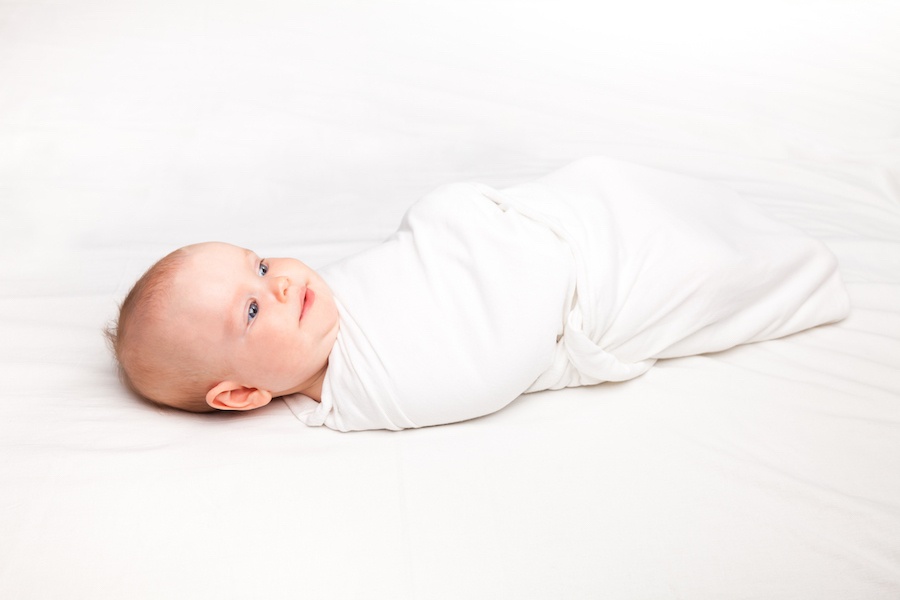
Eat play sleep is a very popular principle in the baby sleep world. As a new mom, I tried following it to a tee.
Now, as a Baby and Toddler Sleep Consultant, I see parents struggle trying to follow it too closely.
Let me teach you how to do eat play sleep while feeding on demand and not getting caught up in rigidity when it comes to feeding your baby.
What is Eat Play Sleep?
Eat, play, sleep (or eat, wake, sleep) is a routine that I recommend parents use to organize baby’s naps and feedings throughout the day.
Essentially, baby eats, is awake for a short amount of time, and then falls asleep again. The cycle repeats throughout the day. It’s a very common theme in many popular baby sleep books including Babywise and The Baby Whisperer (who refers to it as the EASY baby schedule.)
Let me show you how to do it even further.
Eat
When baby eats, the goal is for baby to be awake and alert. This helps baby take a full feed, fill up their tummy, so they then take a nice nap.
Full feeds can help keep your baby from “snacking” all day long and throughout the night. They can also helps to establish your baby’s metabolism and internal clock.
Play / Wake
Now it’s play or awake time! This is often called a wake window and is the perfect time for you to interact with your baby.
During this time, I usually practiced tummy time, read baby books, or went for a quick walk outside.
Sleep
After baby is awake for an appropriate time, it’s time to get them to sleep. Sleep length can vary, especially for newborns. It’s not uncommon for baby to nap for 30 minutes, especially those first few months.
After baby wakes up from her nap, you repeat the cycle all over again.
My daughter used to wake up happy from a nap and then look for her bottle in my hands. Babies really can learn from an early age!
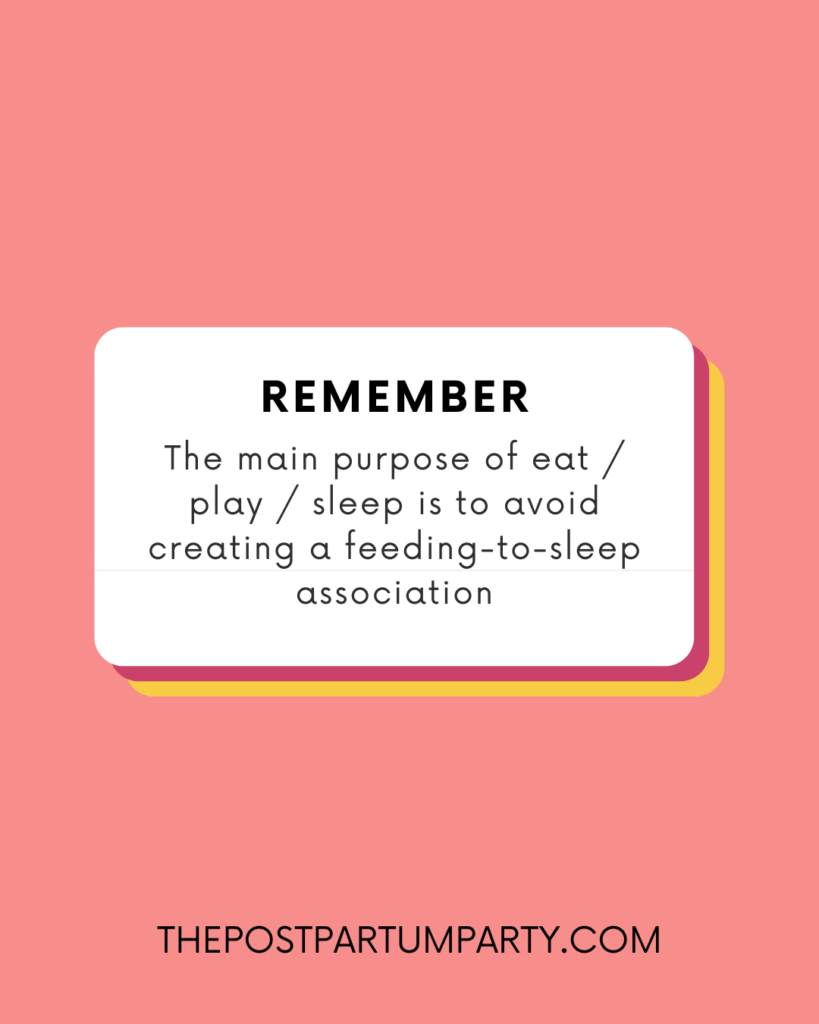
How to Do Eat Play Sleep (the Right Way)
The problem I see is that some parents take eat / play / sleep too literally. When baby takes a short nap and isn’t ready to eat again, they wonder how to fit in a feeding before baby’s next nap.
The main point of following eat play sleep is to avoid nursing or feeding your baby to sleep. By moving feedings away from sleep (even for a few minutes) I was able to help teach my daughter how to fall asleep without the breast or bottle.
Instead of following eat play sleep literally, I recommend parents try to keep feeds 30 minutes away from baby’s sleep time.
At Bedtime
When you do your baby’s bedtime routine, don’t follow eat, play, sleep as closely.
Instead, do a wind down routine with your baby such as bath time, lotion, jammies, and books, and then feed baby.
When to Start Eat Play Sleep
I’ve learned that it’s nearly impossible to follow eat play sleep in the newborn phase.
A newborn’s wake windows are super short, typically 30–60 minutes and a large part of that time is taken up by the feeding.
It’s common and normal for newborns to fall asleep during the feed, because they are sleepy most of the time.
Around 8 weeks old though, baby starts waking up a little more and is hopefully a more efficient eater.
As your baby grows and is able to extend the time that they are awake, it gets easier to separate their feeds from sleep by 30 minutes.
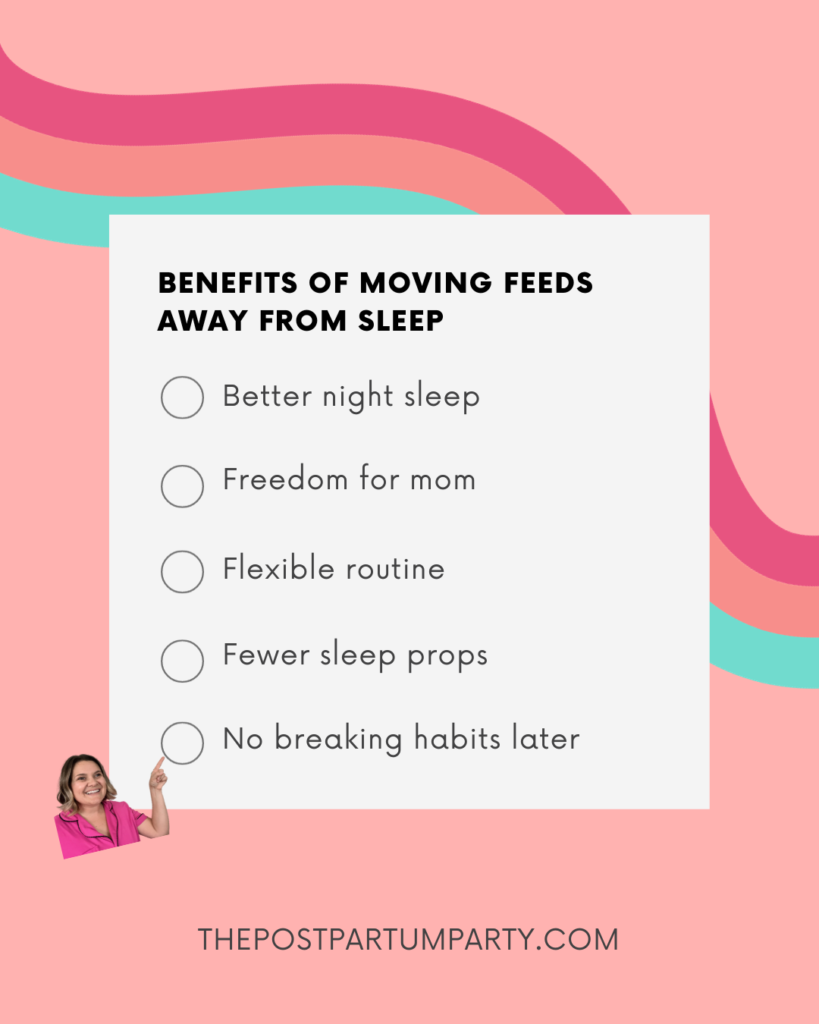
When to Throw It Out the Window
Part of having a flexible routine means knowing when to toss it aside for a few days. And sometimes an eat, play, sleep schedule doesn’t always work.
If you need to feed your baby to sleep once in a while, it’s fine. I wouldn’t worry too much about picking up bad habits, especially in these instances:
Growth Spurt
If baby is having a growth spurt, she may need to eat more frequently and she might take shorter naps. It’s hard to fit in (and probably unnecessary) the cycle each time during cluster feeds.
Sickness
All rules go out the window when baby is sick. She needs mama’s closeness and cuddles right now. I recommend snuggles and feeds if that’s what bring comfort. I just tried to get back on track when everyone is better.
Newborn Phase
It can be really hard to follow eat, play, sleep when baby is only one month month old or younger. Try to create a little separation from baby’s feed and sleep by changing a diaper in between. Don’t stress it too much this early on though.
As baby gets closer to two months old, she will start to “wake up” a little and you can work on eat, play, sleep then.
Bedtime/Middle of the Night
Don’t take eat, wake, sleep too literally.
It might sound crazy but people have asked me if they should play with their baby in the middle of the night after a feed or after a dream feed. Goodness no!
Feed that baby and get everyone back to sleep ASAP!
I am so glad we worked to establish eat, play, sleep with our daughter! It made it easy for my husband or her grandparents to put her to bed and it helped us establish good sleeping habits with her from the beginning. I was a better mom when we all got sleep!

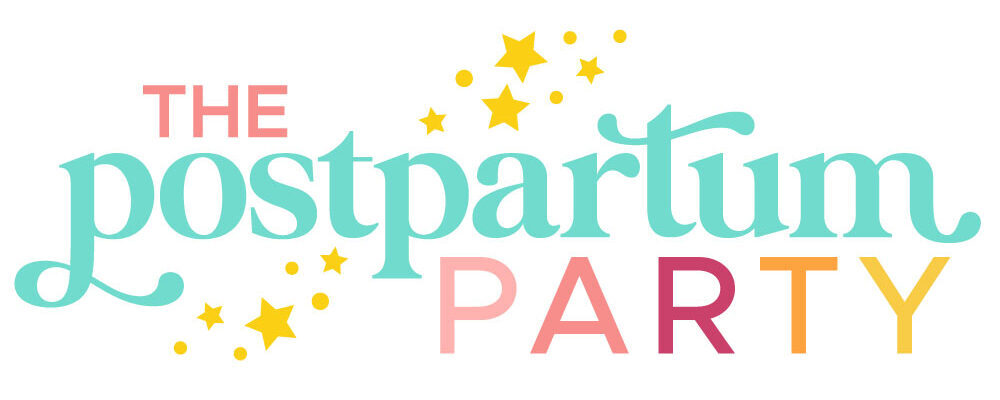
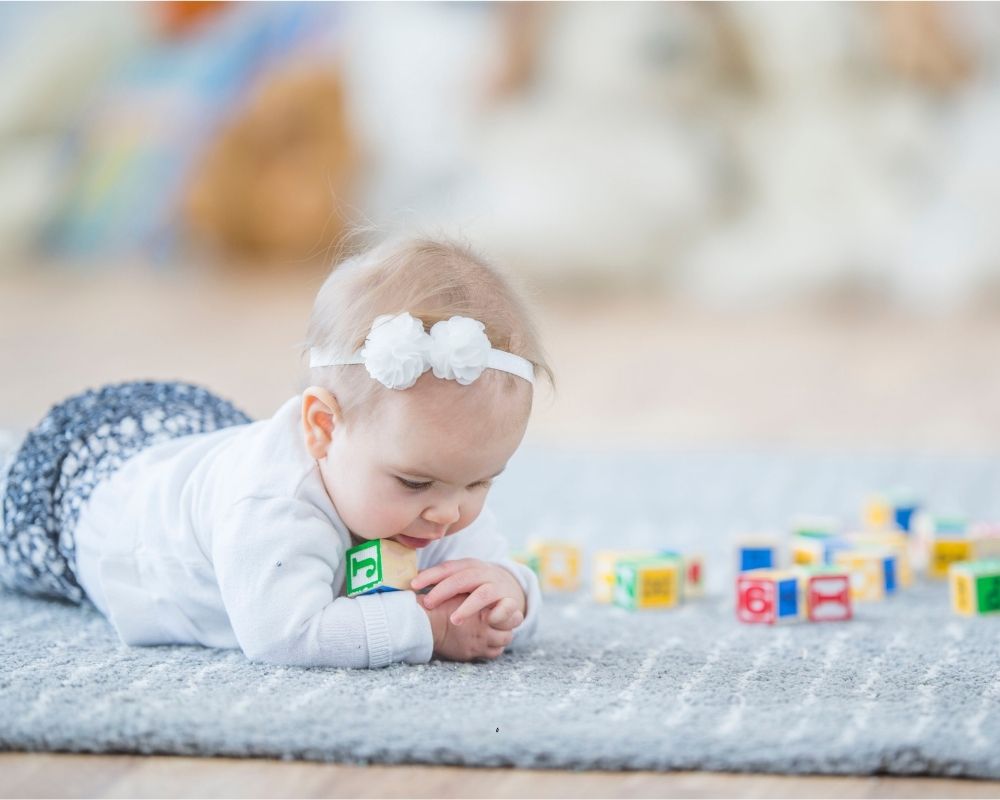
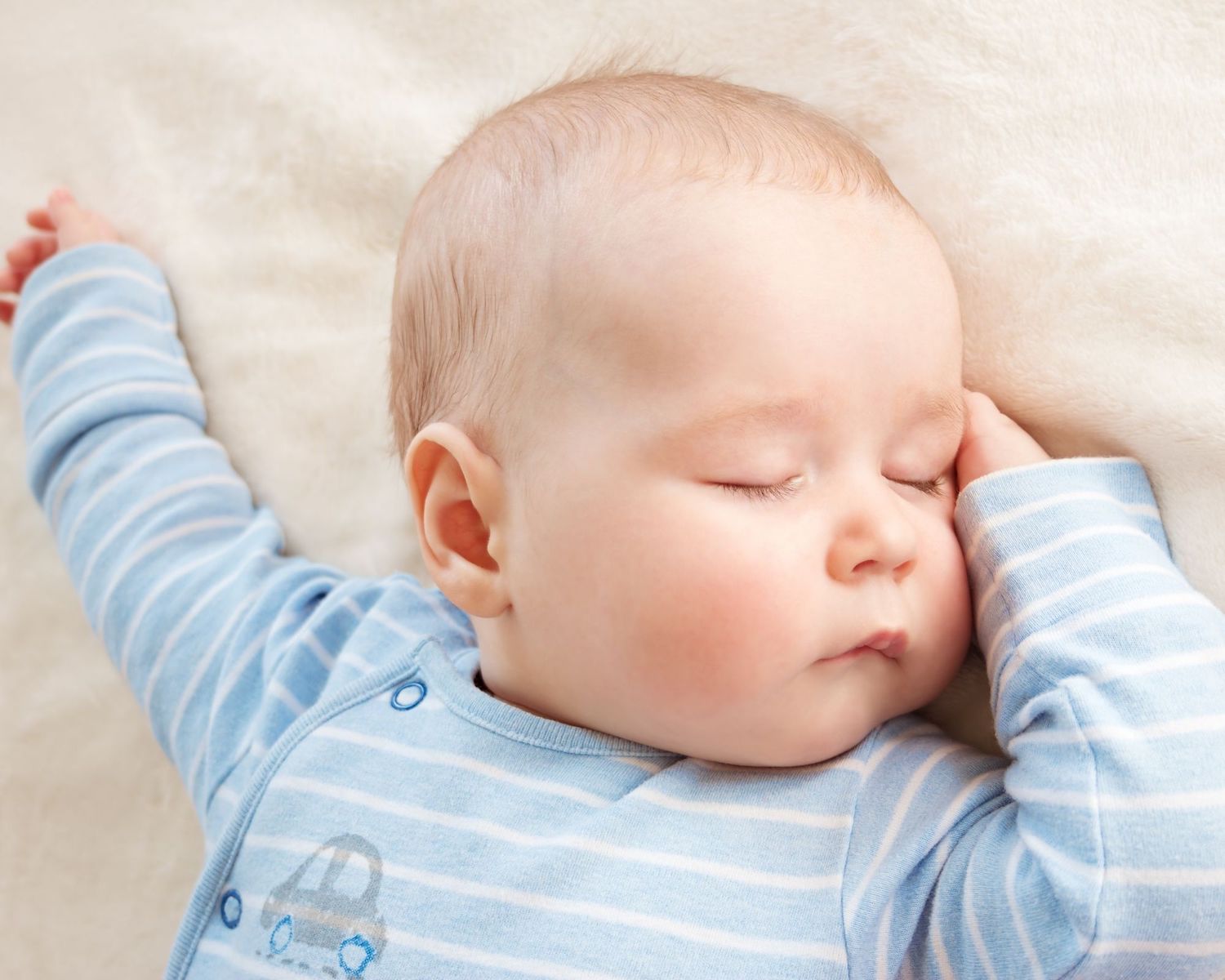
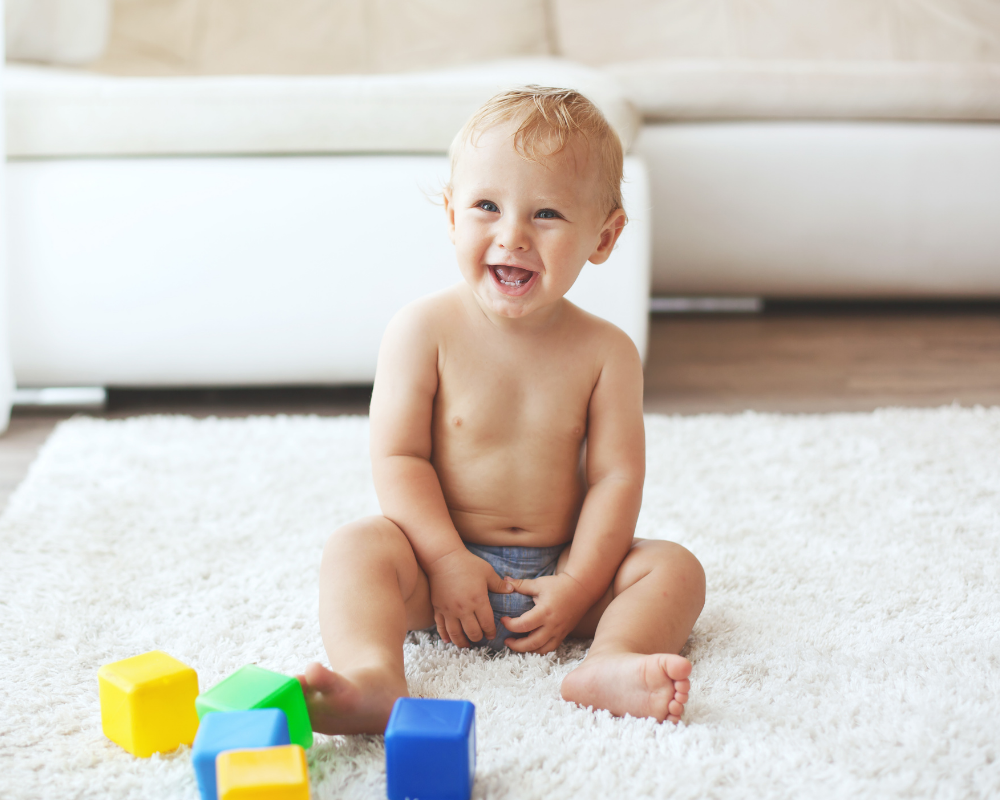
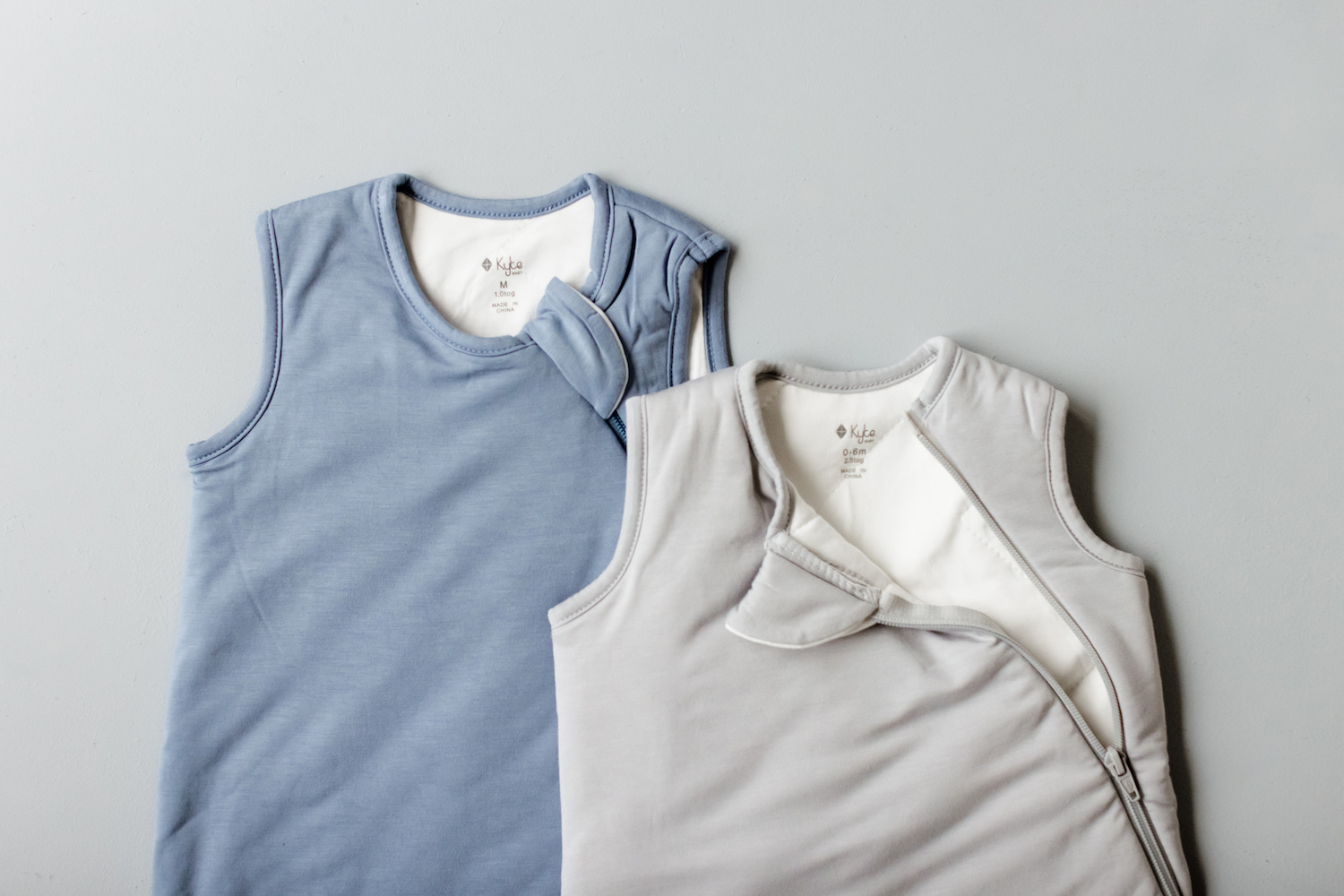

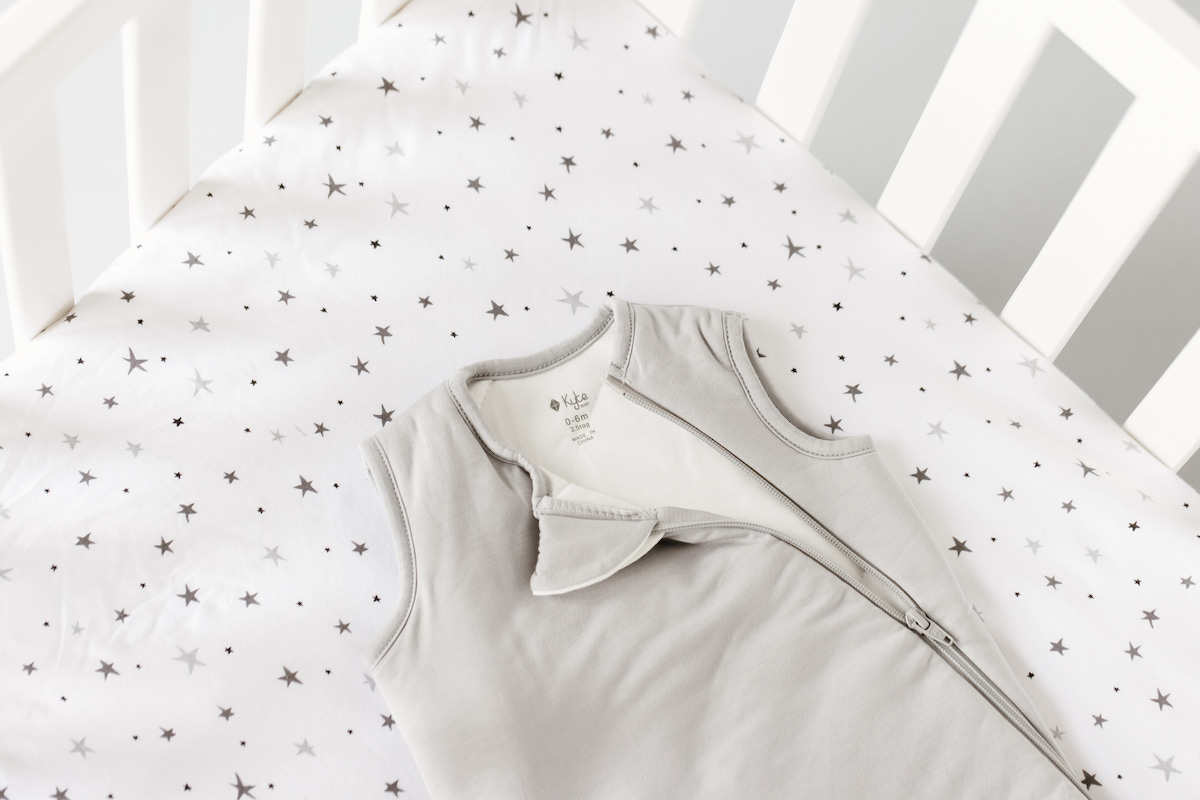
4 Comments